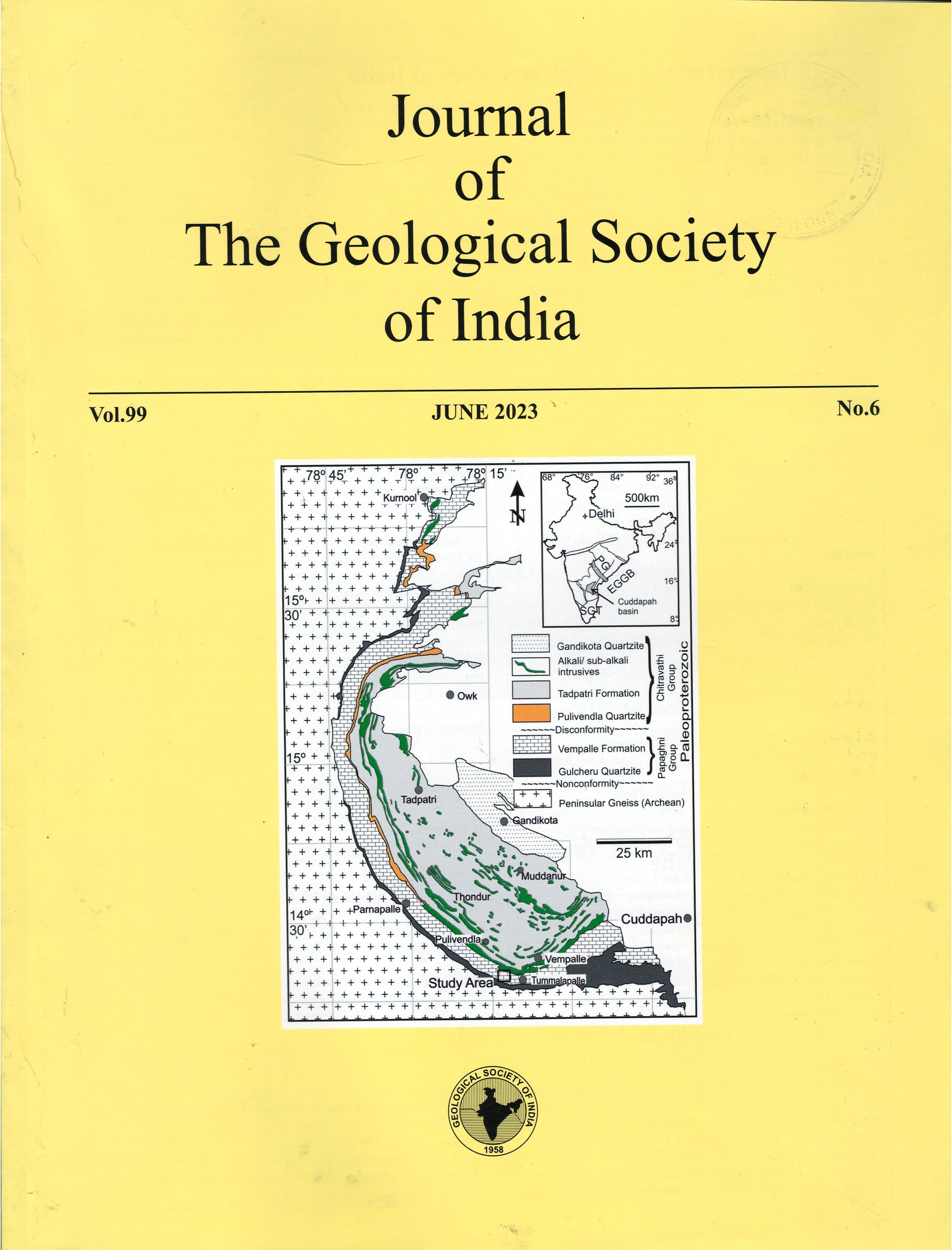Comparative Assessment of FR and AHP Models for Landslide Susceptibility Mapping for Sikkim, India and Preparation of Suitable Mitigation Techniques
DOI:
https://doi.org/10.1007/s12594-023-2386-xKeywords:
No Keywords.Abstract
The Gangtok subdivision in east Sikkim district was developed under different geographical, lithological, and historical conditions. This research aimed towards creating a landslide susceptibility zone with the help of two GIS models, namely AHP (analytical hierarchy process) and FRM (frequency ratio model), used for landslide susceptibility mapping and make a comparison in accordance with their outputs. Primary data like the landslide location was collected by using the GPS technique and BHUVAN landslide inventory, while, photographic data were collected from various satellite images and theme-based images from BHUVAN, ENVIS, and Earth Explorer. Other secondary data were collected from the Survey of India (SOI), National Bureau of Soil Survey, Geological Survey of India, NRSC, India, and land use planning (NBSS&LUP), Census of India and Indian Meteorological Department. Eleven thematic layers including landslide inventory, rainfall, lithology, geomorphology, slope, aspect, curvature, distance from lineament, distance from the road, distance from drainage, and land use/land cover, were considered for the FRM method and the AHP method. AHP map captures 80% of the active slides in the very high to the high susceptible zones in comparison to the 75% active slide capture by the FRM method in the very high to high susceptible zone. For validation and comparison of the model output, the receiver operating curve (ROC) was applied to 30% cases out of the 100% of total landslides (92 landslide locations were marked). AHP method was found out to be the best among the two models with a 98% accuracy level. The risk mapping was done by integrating exposure map with hazard map along with physical vulnerability map of the study area. Through risk mapping it is seen that the eastern section of the study area has the least risk but on the contrary, the western zone is the riskier zone for landslide hazard. There has been also an attempt to find out plausible methods for landslide disaster management and mitigation for the study area.

 Brototi Biswas
Brototi Biswas






